Mush
Riding a fat bike on the snow is anything but quiet and stealthy. The crunch of snow crystals beneath the tires is loud, constant, and certainly disrupts the stillness of an otherwise quiet winter landscape. Dogs, on the other hand, match the whoosh of wind moving through the trees. There are no hard edges or loud crunches to the way they travel. Their paws land softly on the snow, their panting is hardly noticeable, and the sled seems to glide silently in their wake. It is truly breathtaking to behold.
I awoke with an abrupt start. My heart jumped up to my throat, and I tried to rise gently, resisting the urge to jump straight out of the sleeping bag. I excitedly shook Sam and whispered, “The first team!” The soft glow of predawn allowed us to clearly see the sleepy landscape and forest. The trail ran directly in front of the cabin about 40 feet away.
The musher was balancing on the back of the sled, only a portion of his face showing. I imagined him to be tired, or perhaps simply consumed with the task at hand, as he didn’t notice us on the porch. The dogs did, however, and excitedly leaned hard toward the cabin. I merely wanted to watch, not disrupt, and as the dogs veered toward us, I felt myself holding my breath and sliding deeper into our sleeping bag. The musher called them back on course.
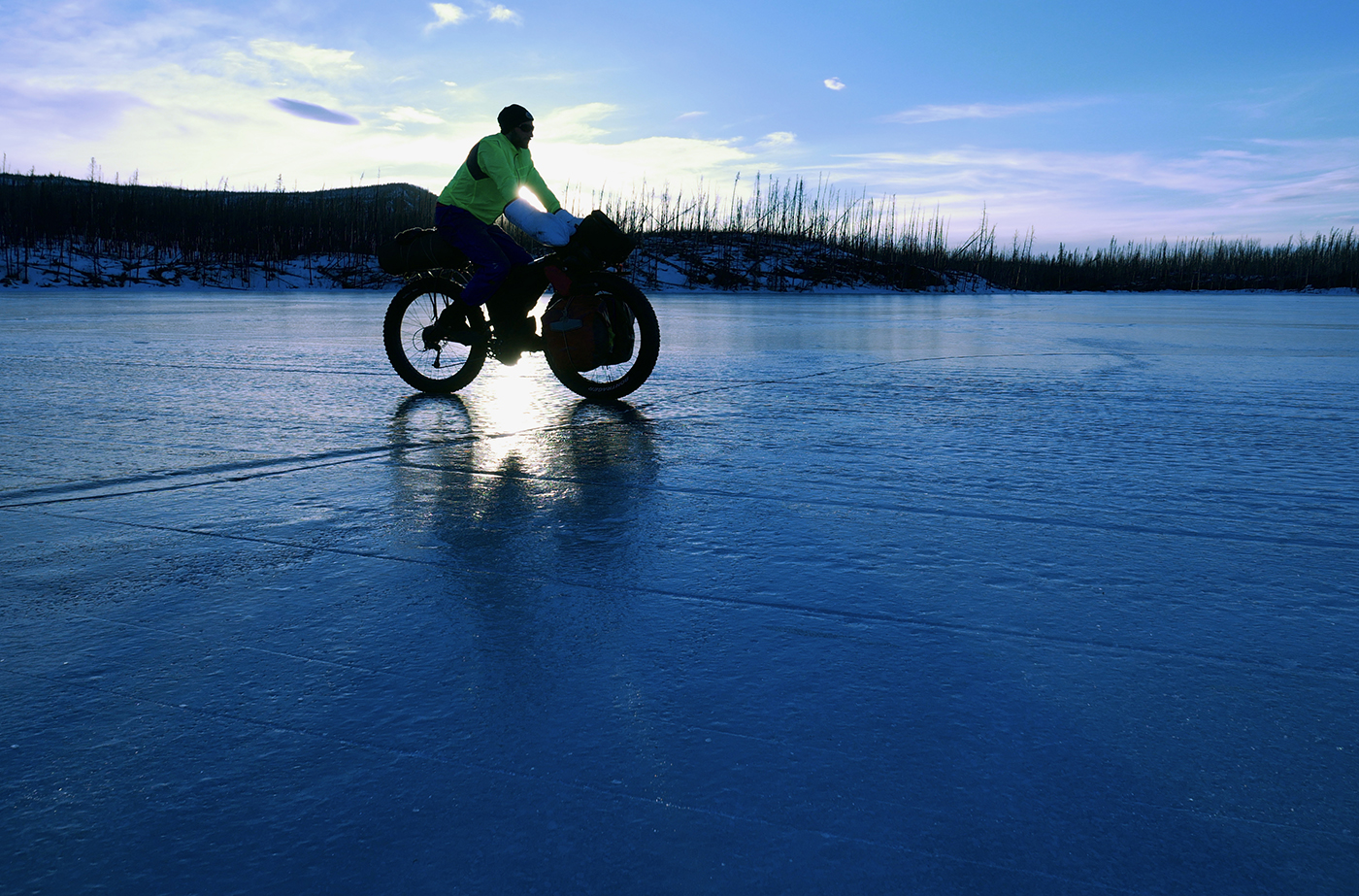
We were nearly two weeks into an exploration and tour of the Iditarod National Historic Trail, a winter trail that travels 1,000 miles through Alaska’s wilderness and crosses vast expanses of marshes, lakes, rivers, and sea ice, much of it impassable when not frozen. This wilderness is peppered with small communities that, in all other seasons, are only accessible by boat or plane. Until the advent of snowmobiles, mushing was the most efficient way to travel through Alaska’s winter landscape, and some still argue it’s the safest way. While the dog sled race that began in 1973 still runs each year, the local culture around mushing has shifted, and snow machines (a.k.a. snowmobiles) are replacing dog teams. The trail now hosts the Iron Dog, a yearly snow machine race, as well.
Because we were touring and not racing (the Iditarod Trail Invitational is a 1,000-mile fat bike race along the route), we could pause to indulge in lengthy conversations with locals. We traveled big days, but we pedaled without agenda, allowing the ever-changing landscape to pull us forward. We wound our way along massive riverbeds, sometimes atop blue, undulating waves of ice and other times on a wide, snowy highway. We pushed through vast, snow-encased valleys with peaks rising miles away that appeared close enough to touch. We turned back to see Denali and Mount Foraker ablaze in perfect pink light while everything else dissolved into darkness. We raced on dry trail through old burns until we hit a small marsh or lake — skittering, fishtailing, and giggling until we regained some semblance of control. There were warm days when even a light wind layer was unnecessary — and then there were days so cold that exposed skin would freeze within a minute. Stopping for long was not an option — everything froze around our faces, making it challenging to eat. We often pedaled into the night, the sunset light extending for hours and the darkness giving way to a sky of dancing green. There were days when Sam and I pedaled for stretches without being able to see each other. These were my favorite moments — a teeny, tiny speck amid something much larger.
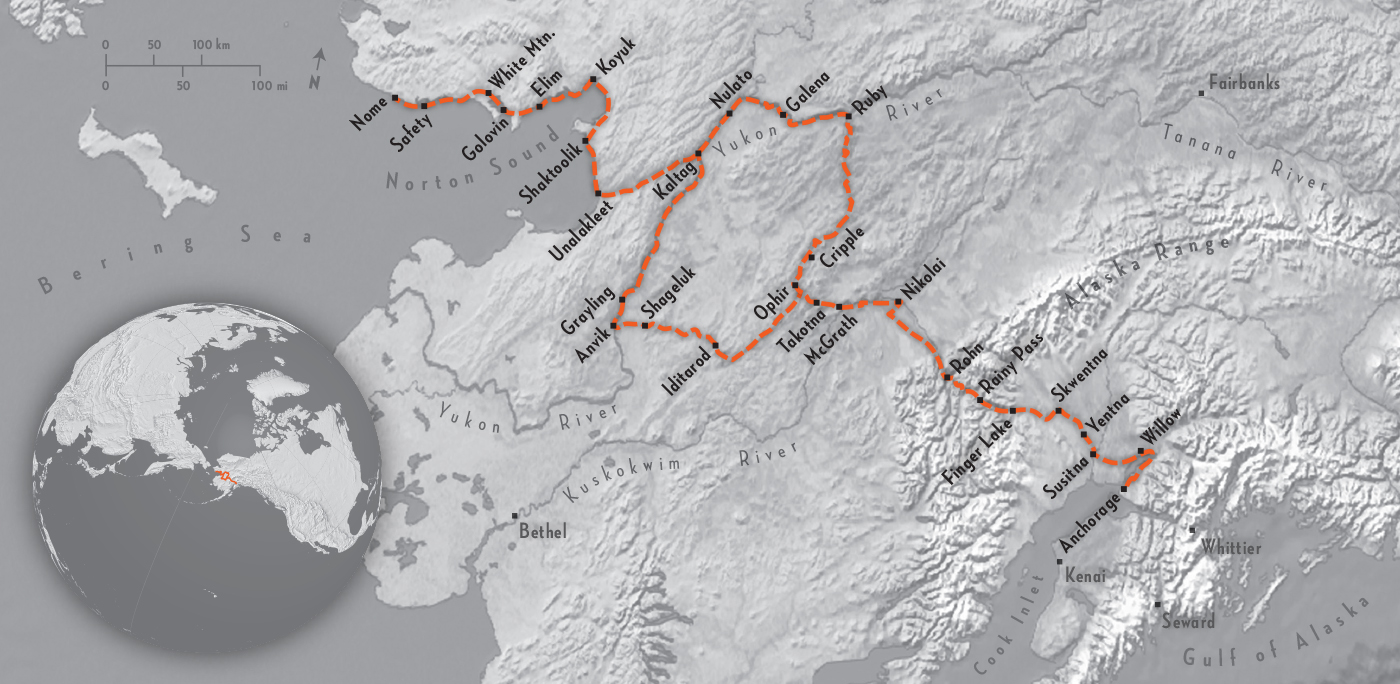
In this wild winter land, harshness and beauty are pressed up against one another, inseparable. The communities we passed through seem to mirror the landscape in which they are embedded. As technology and materialism follow the speed of the snow machine, these villages — still remote and confronted in each instance by the reality of that remoteness, along with thousands of years of tradition — are in the midst of redefining themselves.
The winds, gusting up to 50 mph, were too much for us as we approached Shaktoolik, pushing our bicycles down the icy street, shoulders bracing. However, the small children, moving blobs bundled in insulated clothing, seemed unfazed. A gust of wind blew them across the street, and they continued on as if nothing had happened. Shaktoolik is positioned on a spit of land that divides Norton Sound from the open ocean. It’s notorious for big winds and harsh weather.
We sat in the hallway of the school, our shelter for the night, and crossed paths with a woman named Amy. Her lightness seemed incompatible with the ferocious winds shaking the building. She had returned to grab something from her classroom and paused to chat.
“My husband and I have lived here for five years,” she said. “We love it. It’s cold. Not easy living. But the community is wonderful. Kids are kids. My students are silly, easily distracted, curious, and creative.”
The basketball team would leave the next morning for a tournament in Anchorage, and Amy pointed to the handmade signs pasted onto various lockers throughout the hallway.
Amy’s blond curls disappeared under her hat and her face hid behind her parka as she left to retrieve some gas for our stove.
Norm, a local who helps manage the school, showed up to check in with us. His energy was kind and straightforward.
“This is the first year, ever, that the sea ice hasn’t frozen,” he said. “Typically it freezes from the land out several miles. Without the sea ice, we are unable to seal hunt. Seal meat and blubber is a staple for us. Also, without the ice our strip of land continues to erode while the waves pummel us through the winter.”
The warm temperatures are not only affecting Shaktoolik and the sea ice, they’re also affecting the rivers’ ice. We learned of four different deaths caused by locals falling through the ice — huge tragedies and losses for small communities to bear.
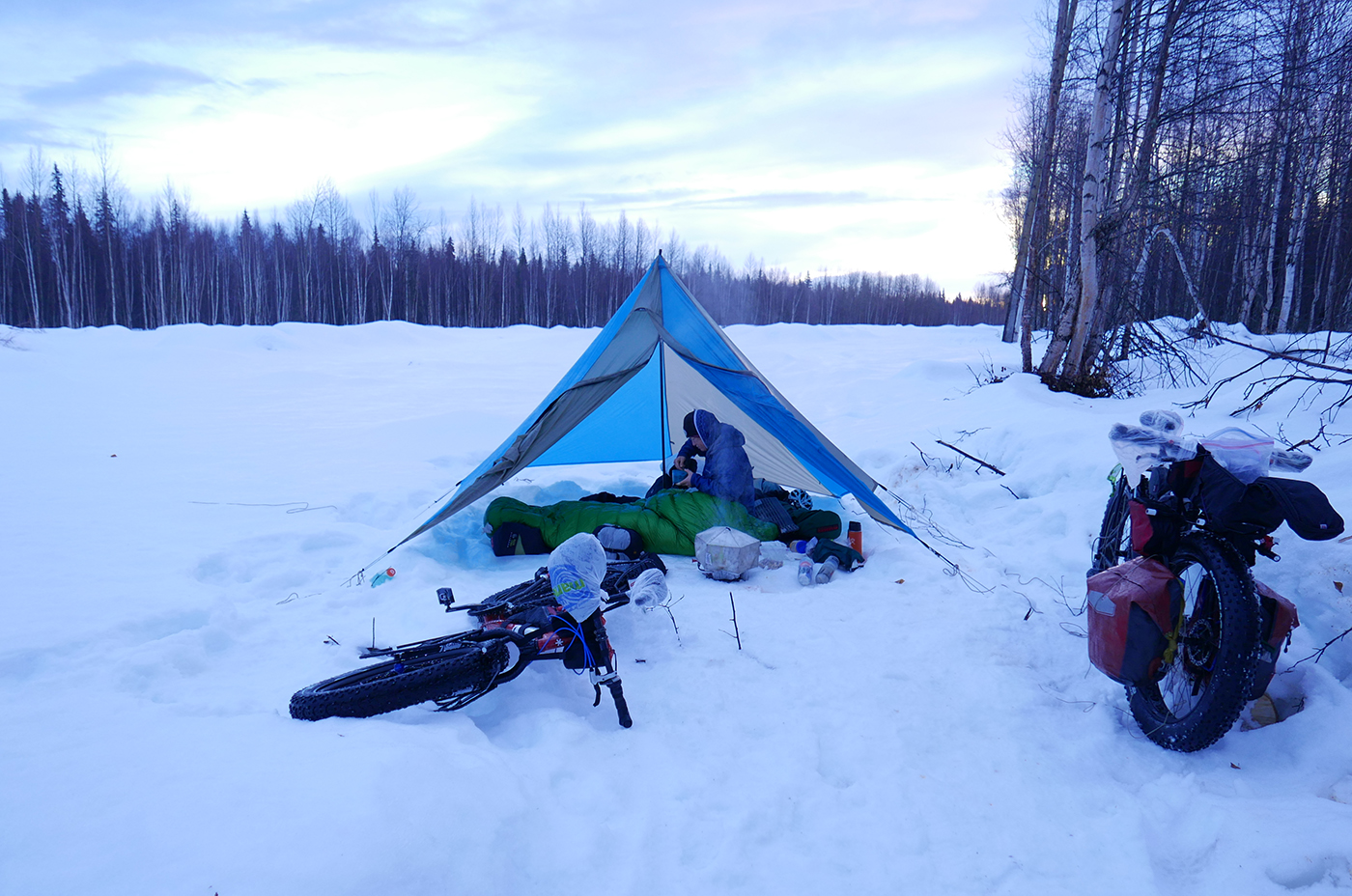
Layover Day
We stayed at Tripod Flats cabin, and it was crystal clear, calm, and warm. The surrounding landscape was open. There were some spruce nearby, but our eyes could follow the uninterrupted, undulating white expanse off to hills and mountains in the distance.
We were savoring a lazy, cozy morning with a wood stove, and fewer layers of clothing, when we heard motors approaching. We stepped outside to greet two gentlemen on snow machines. They came from the west and had stayed last night in another Bureau of Land Management (BLM) cabin not too far from us. Peter and Ryan both work for the BLM out of Anchorage. Sam talked to Ryan and heard about his vision for the management and future of the Iditarod Trail, hoping in 10 years for local ownership, the inclusion of more native names and language onto signs, and to find ways for local school groups to come out and use the cabins. Ryan and Peter had just put up some new signs and mentioned that they believe the signage and cabins help save lives.
I talked to Peter — gentle, unassuming — born and raised in Nome. His father was originally from France, worked in Dutch Harbor (a small village in the Aleutian Islands), and, along with French, spoke English, the Aleutian Island native language, and the Coastal (Athabaskan) native language. Peter’s mom was from a smaller village north of Nome.
“Nope, I know none of my native language,” he said. “My mother refused to speak it to us because when she was little the missionaries would beat and punish her for speaking her native language. And she didn’t want that to happen to us.
“People ask me about my culture, and I say it’s dying,” Peter continued. “We should have started five or six decades ago to save the languages. Now it’s too late.
“Some kids interviewed my mom a few years back. They asked about her past, her culture. She said she wouldn’t go back to the old ways. She likes her TV, her car, her toaster,” he added.
There was a long pause, and I looked out at the scraggly spruce trees, heard the voices of Sam and Ryan and the drip of snow melting off the cabin roof.
Peter shifted his weight. “And the young people these days have no respect,” he said. “No values. Nome has lots of drugs — heroin and oxycotin — lots of busts the last several years.”
He paused, looking thoughtful. “I almost dropped out of school before getting my degree. But my dad was dying at the time, and I knew if there was one thing I could do to make him proud, it was to finish school.”
Ryan and Sam came over and our conversation ended. We offered coffee, tea, and snacks, but they needed to get going, and before too long the drone of their engines faded away completely.
Making Sense — Generosity, Beauty, and Hardship
Over our three weeks on the Iditarod Trail, we heard plenty about the challenges faced by these small communities — drinking, addiction, fetal alcohol syndrome, high suicide rates, and the aforementioned environmental challenges. However, we also experienced beauty, lightness, and growth.
One late night, under a dancing sky of northern lights and after a rugged day of constant moving — crossing the sea ice in -10 degrees Fahrenheit temperatures with 30–40 mph winds — we were met in the street by four young boys. They stood tall. Their eyes shone bright, vibrant, as they looked us in the eye and introduced themselves. One asked to ride Sam’s bike and proceeded to successfully wheelie it (despite 40 pounds of weight in the front panniers) for most of our walk across town. When we arrived at our destination, he handed Sam back his bicycle, shook his hand, and said, “Thanks.”
At the end of our journey in Nome, we met Anna. She swept us off the street and invited us into her home. We were enveloped (like the plethora of cyclists she’d helped out before us) in her generosity, sourdough pancakes, caribou stew, and other yummy treats, while also sharing heartful, honest conversation. She spoke to the struggle kids face coming from smaller, tight-knit villages and attempting to thrive in college. For most, the culture shock is too great, and they drop out before the end of the first year. However, Anna, who grew up in Unalakleet, went on from college to become a physician. She and her husband are redefining village life and culture.
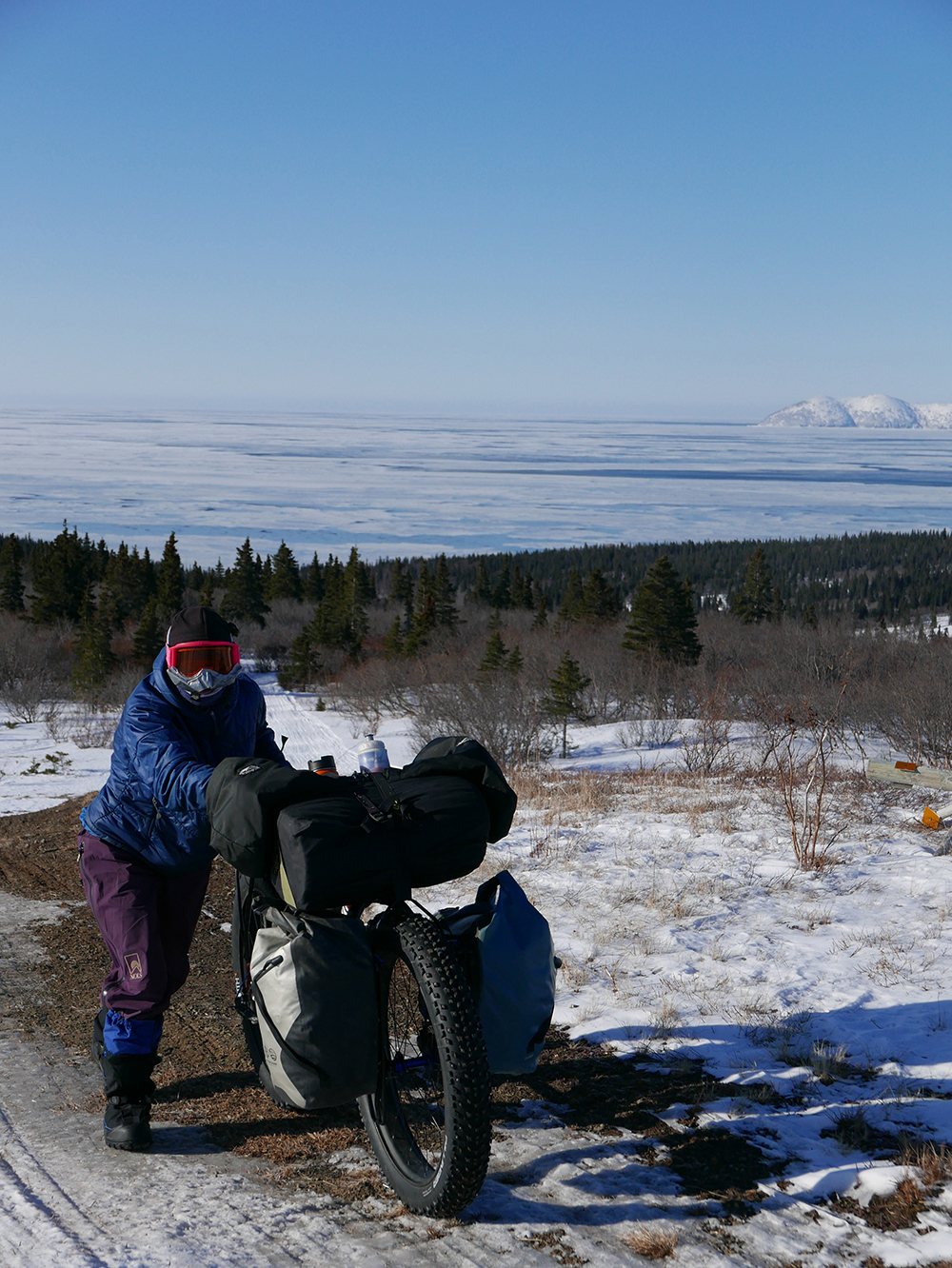
Blending
We traveled the wide, frozen river highways. It was early afternoon, and the light had already begun to hint at the impending sunset. We made the decision to leave the trail and pedal through Koyukuk. Our history notes indicated Koyukuk was more primitive than some of the other villages: there is no running water, honey buckets are used for disposing of human waste, wood is burned for heat, and when the river floods, sewage is said to go everywhere. It’s not officially on the trail so the traffic and racers usually remain down on the main river, a distant blur.
The village is a network of flat-roofed houses interrupted by the crisscrossing of snow-covered roads. As we slowly wandered the streets, we met a number of locals, each kind and welcoming in his or her own way. Three young boys appeared out of nowhere. They wore skinny jeans and sweatshirts — no jackets. The crinkle of plastic grabbed my attention as one of the boys snacked on M&Ms. They shyly asked us some questions before dropping back into houses and shadows.
Our best articles, twice a month, in your inbox.
As we stared at the flyers on a local bulletin board, three snowmobiles pulled up. The young men hopped off, introduced themselves and offered a hearty welcome to their village. We chatted for a long while. Eventually we were invited to Jared’s home. We leaned our bikes outside and wandered up the steps. The kitchen blended into the living room, which was also the bedroom. We sat on a cooler. Jared stood next to the stove, and the other two young men sat on the bed across from us.
They told us about life in Koyukuk and offered us beer and weed. They had just returned from gathering a cord of firewood, which they planned to sell. The day before they had salvaged an old snowmobile from the dump, and with a little more work it would be up and running. Two days ago, they had explored the nearby mountain on their snowmobiles, and two of them had just returned from Las Vegas. They showed us some photos on an iPhone and then insisted we take a selfie. They told us they needed to build a new smokehouse before fishing season.
We had wandered to Jared’s house in the first place because he had offered us canned salmon. When we pedaled away, we had shared some venison jerky and a few stories of our own, but we carried with us the energy and gifts of true generosity. The young men had upheld that deep cultural thread. The object of value is changing, but the principle of offering one’s best remains.
Katie Newbury pedals, at home and all over the world, to connect. She prefers sleeping outside and is curious to know “Will we ever be able to wheelie the tandem?”

Nuts & Bolts: Iditarod National Historic Trail
Trail/Terrain
This winter trail travels approximately 950 miles through the interior of Alaska to the coast, then parallels the coast north. The trail passes through two small towns, settled during early mining days, and over a dozen native villages.
Hazards
- Exposure, subzero temperatures, windchill
- Changing trail conditions can slow travel to as little as 0.5 mph
- “Overflow” on creeks, rivers, and lakes. Water accumulates on top of the true layer of ice on the river or lake. Subsequently, a thinner layer of ice forms on top of that. It can appear solid, until it’s not. It is possible to punch through and sink into overflow that is waist deep or higher.
- Moose. Share the trail!
Logistics
The best time to travel the trail is late February, early March. Know the schedule of different races. Note that the races alternate between a northern and southern route.
We carried five to six days of food per ration. We mailed resupplies to villages and also bought some supplies in villages. Many communities offer cyclists paid lodging at personal homes or the school. There are seven Bureau of Land Management cabins on the route and at least three safety cabins.
Longest mileage between shelters: approximately 50 miles.
Longest mileage between store/resupply: 180 miles.
Timeline
Riders must be flexible! Trail conditions can change at the drop of a hat. We moved at a leisurely pace for 10 to 12 hours a day, with some layover days, as well as some shorter days and lots of conversation, taking three weeks total.
Setup
- Luggage: except for a few handlebar bags, and some old framebags, we used panniers and stuff sacks.
- Feet: extra-large bike shoes and Neos overshoes (overshoesneos.com) with backup insulated booties.
- Pedals: you could ride flat or clipless.
- Tires: studded tires are useful as there can be long sections of glare ice on rivers and lakes.
Winter Expedition Riding
You must have solid winter camping skills before attempting an expedition like this. There is a significant difference between camping and staying indoors, be it in a cabin, house, school, etc. Although there are indoor options on this route, the unpredictable nature of winter riding and the inescapable dependence on adequate trail conditions can suddenly leave you exposed to the elements for days at a time.
Tips
Know how to manage your temperature with multiple layers and systems for hands and feet. These are often the trickiest body parts to keep warm in really cold temps. Don’t sweat!
Winter is a magical environment to live in and travel through. No one likes to be cold, including me. With proper layers and experience, you don’t have to be cold, even when it’s -35°F. Everything takes longer and requires more attention in the winter. A wet shirt means you have to use your body heat to dry it. Instead of arriving in camp and relaxing, all hands are on deck — melting snow, making food, and preparing the shelter. Shoes, gloves, socks, anything with any moisture needs to be protected from freezing.
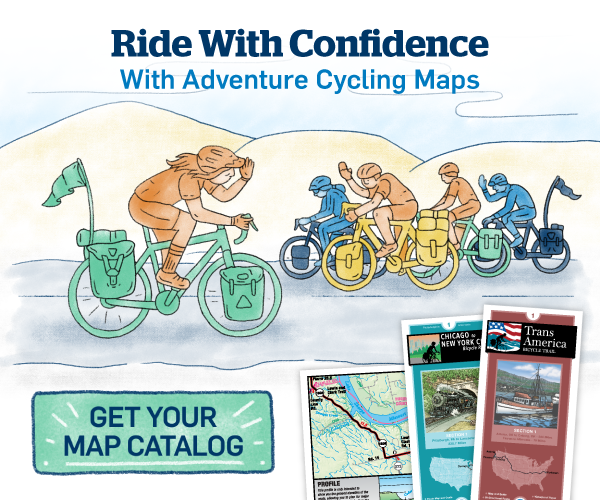
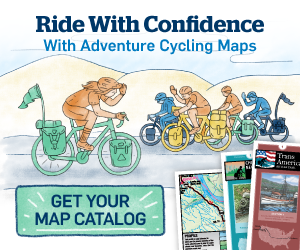
Comments
Amazing, epic journey, I am inspired! Your writing style is great - several of your sentences really gave me pause to contemplate. Also...you are HARDCORE for braving these wild elements.
I was in Elim when the Iditarod Invitational racers came through last year, some delirious, frost bitten and a few deciding to scratch. It's so nice to read an account of a well planned, well executed exploration of this trail. Thanks for sharing a glimpse of your journey.
Very interesting trip, and nicely written.
I'm curious about how you keep your feet warm in such low temps. I ride in Cleveland all winter and have been out as low as 12 below F, but my footwear is marginal at these temps. I've used felt insulated Will Steger mukluks inside Neos overboots. Still, it's chilly after an hour or more. I have to get off and trot for a bit. Any thoughts or recommendations?
Great article, beautiful pics, but I couldn't imagine trekking through such cold! Cheers to you!
A lovely account of a true adventure. Thanks for sharing.
Forgot Password?
Enter your email address and we'll send you an email that will allow you to reset it. If you no longer have access to the email address call our memberships department at (800) 755-2453 or email us at memberships@adventurecycling.org.
Not Registered? Create Account Now.